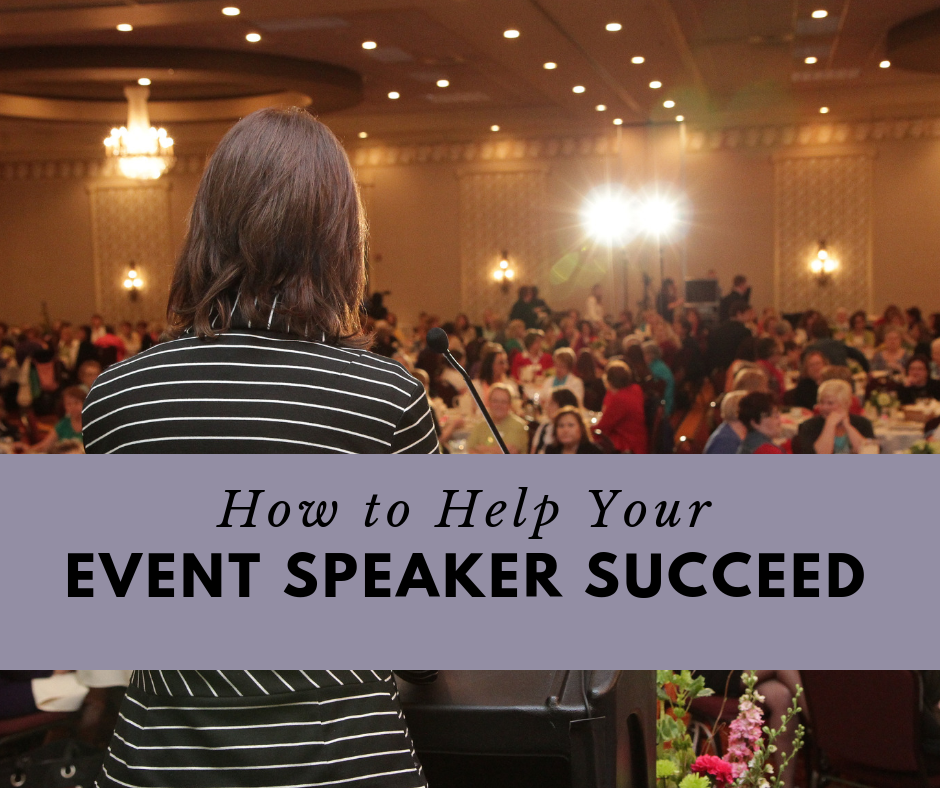|
It takes courage to speak to a large crowd.
Every speaker I’ve ever met spends hours perfecting their message. They search for perfect anecdotes and create meaningful slides that support their points. They’re ready to inspire and inform. As someone who works with speakers, however, all that prep work doesn’t necessarily lead to a polished presentation. Whether you’re a speaker or someone who works regularly with them, there are a few extra steps that need to be taken to make the speaker sing instead of stutter. Know Your Audience Speakers know their topics, but they don’t always know their audience. Some audiences come to a presentation with a depth of knowledge and high level of interest. Others? Not so much. The best presenters ask detailed questions about who will be in the audience. They tweak their message to meet audience needs. If you’re working with a speaker, make sure they get this information even if they don’t ask for it. Use a Mic Always. It may be tempting to go without a microphone if the audience is small and you’re confident in your ability to project your voice. Don’t. Even a small audience can find it difficult to hear over the clatter of plates being removed from the lunch table. Or a hotel air handling system. Use a microphone. You’ll never regret it. On a related note, be sure to dress for a microphone. Items like loose jackets, chunky necklaces, or scarves can rub against a mic and drown out your words – or at least serve as another distraction for your audience. Check Your Tech Allow ample time to check any technology that you will be using. If using a PowerPoint presentation, load it early so you can check for missing fonts and photos that might not transfer. (Did you know you can a save your fonts WITH your presentation? Search “Save Fonts with PowerPoint” in the “Save As” menu.) Even checking technology is no guarantee it will work, so be prepared to punt. I once gave a presentation to about 300 emergency room doctors and nurses. I arrived ahead of time, checked the stage, loaded my slide deck, and viewed it on the screen. With 20 minutes left before I spoke, I simply put the plastic lens cover on the projector. When I took the cover off after being introduced, it became apparent that one of bulbs in the projector had burned out. Only half of the image displayed. I continued my presentation sans images. Be Aware of Your Surroundings If you’re a speaker, identify someone who can help you on the day of the presentation. This person may not be who made the arrangements to get you there in the first place. But this person can get you water, fix your tie. This presentation buddy needs to be available and accessible. Take a moment to check out the space where you will be speaking. If there is a stage, how do you get on and off of it? Where will you put your notes and your water? If using slides, how will you see them? If all you have is the same screen your audience is looking at, think about how to handle it. You don’t want to spend a lot of time with your back to the audience. Rehearse Onsite Most speakers will practice their presentations. But there are other elements that need to be rehearsed. Pay close attention to the transitions. Is someone introducing you? If so, what will happen when you take the stage? Do you shake hands? Hug? High five? At the end of your presentation, what happens next? If a host or emcee is taking the stage, work out ahead of time what that interaction will look like (and where!). Take time for a short walk-through. This will guarantee the audience’s last impression won’t be one of uncertainty and awkwardness. An eight-hour conference can be run through in less than an hour if all you focus on is the transitions. I have never had a client regret this time. Do you have handouts? Think about how you will get them distributed. If they can’t be included in conference packets ahead of time, arrive early and place them on tables. Distribution while you are presenting is often distracting. A nice stack in the middle of the table keeps them out of the way as people arrive, but still handy. Invest in a Clock Time. Give it some thought. If you have 45 minutes, does that include time for questions? Ten minutes of questions can go by very quickly. Keeping track of time while on stage can be more challenging than it seems. Larger conferences may provide a speaker timer near the front of the stage. If that isn’t an option, bring a battery-operated wall clock. It can be set somewhere just off stage where it is visible to you. Your cell phone seems like a great option . . . until you forget to go back to the podium to look at it! Paying attention to these small details makes a difference. Good luck on your next presentation!
2 Comments
Ramona Danielson
10/16/2018 09:07:04 am
Great reminders and tips, thank you!
Reply
Anita Hoffarth
10/20/2018 08:57:14 pm
Thanks, Ramona for reading our blog post. Glad you found it helpful! ~Anita
Reply
Your comment will be posted after it is approved.
Leave a Reply. |
Reach PartnersYour partners in leadership. Categories
All
Archives
July 2024
|
|
|
Reach Partners, Inc
3330 Fiechtner Dr. Suite 100 Fargo, ND 58103-2321 701-271-8170 Copyright (C) 2024 Reach Partners Inc.
|

